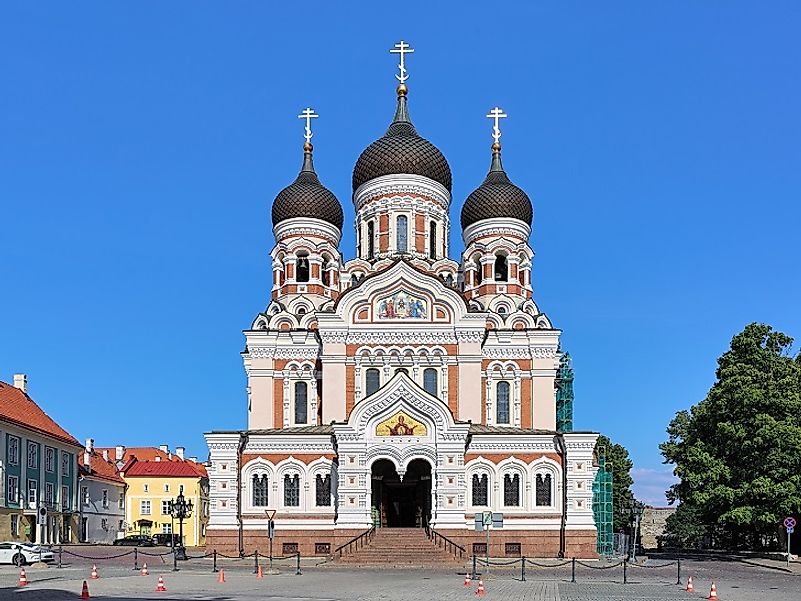Religious Beliefs In Estonia

Soviet policies on religious freedom saw Estonia become one of the world's most secular countries in the 20th Century. In the 1940s the Soviet rule banned any ties to the formally Christian state which was affiliated with the Lutheran Church.Christianity is the dominant religion affiliation in the country. The majority of the Christians identify with the Eastern Orthodox Church and Lutheran churches. Protestantism and Catholicism are rare in the country. In a 2005 Euro-barometer, 16% of the Estonian population was found to believe in God. However, around 64% of the population did say that they believe in a higher power or life source. From this study, around 70% of Estonians believe in "something". In general, Estonians are believers without belonging.
Atheists and Agnostics
In the ancient pre-Christian era, Estonians were pagans. They believed in animistic religions and worshiped in forest groves. They called themselves the faith of the earth. With the coming of Christianity, many Estonians converted to the new faith. However, the old religion survived through folk tales. When the Soviet rule took Estonia as one of its republics in 1918, in introduced policies that fractured and destroyed Christianity. The Soviet launched the forcible state of atheism in Estonia. The effect is still felt today with around 54.1% agnostics or atheists.
Orthodox Christians in Estonia
The Orthodox Church is the oldest form of Christianity in Estonia. In the 10th and 11th Centuries, missionaries from Novgorod and Pskov introduced Orthodoxy in Estonia. In the 13th Century, Estonia fell under the rule of Western Christianity when Denmark conquered the state in the Baltic crusades. In the 17th and 18th Centuries many believers fled Estonia to avoid the liturgical reforms of the Russian Orthodox Church. In the 19th Century, a large number of peasants were forced to convert to Russian Orthodox Church in the era of Estonia's "Russification". The Eastern Orthodox Christianity is dominant among Estonia Russian ethnic communities. In the 2000 census, 72.9% of Orthodox Christians have a Russian descent. Today there are 16.2% Eastern Orthodox believers and 0.2% Russian Orthodox Christians.
Lutheran Protestant Christians
Estonia was once predominantly a Christian state. The Lutheran faith has been in the country since the 16th Century due to the historical links to Germany. By 1934 one-third of Estonians were Lutherans. The revolution of 1917 saw the Lutheran church following in the country drop drastically over the subsequent years. Today, however, the church of Lutheran has lost its dominance to Orthodox churches. Presently, the Lutherans in the country are around 9.9% of the population. The faith maintains a strong bond with other denominations in the country.
Roman Catholic Christians
The first encounter of Estonians with Christianity was in 1054. The trade routes and paths of war joining the East and the West put Estonia in a position for religion confluence. In the 13th Century, the Roman Catholic Church forced onto the Estonians Catholicism with swords and military oppression. The faith dominated over the centuries until the 16th Century when the Reformation took over. The forced religion was out-ruled later. In the late 20th Century, a new movement arose to spread Catholicism which by now had been marginalized by Protestantism. Today Catholic congregational members are 0.4% of the population.
Other Forms of Protestantism
New Protestant faiths arrived into Estonia by the end of the 19th Century. These include the Methodists and Adventists. Pentecostals arrived in Estonia at the onset of the 20th Century. The new faiths posed a religious threat to the Soviet rule, and the freedom of worship was curtailed. The close ties between the Baptist church and the new religion led to a union, and most of the free-believers converted to Baptist. The faith became the most widespread religion in Estonia. Baptist churches came to Estonia in 1884. A revolutionary awakening movement in the second half of the 19th Century led to the so-called free movement Protestants. Today the Baptist Protestant Christians are around 0.4%, the Jehovah’s Witness Christian 0.4%, and the Free Congregation Protestant Christian and Pentecostal Protestant Christian are 0.2% of the population.
Religious Freedom and Tolerance
The state of Estonia is free of religious restrictions. The justice system of the country does not affiliate with any religion. The state provides spiritual protection, and every denomination is allowed to practice without fear of persecutions, oppression, or criticism. The family is the basic unit of Estonia, but nevertheless, religion plays no role. The histories of religious groups have no influence on how denominations interact. The faiths coexist freely and with close ties among them.
Religious Beliefs In Estonia
| Rank | Religious Belief | Share of Adherents Among Estonians Today |
|---|---|---|
| 1 | Atheist or Agnostic | 54.1% |
| 2 | Eastern Orthodox Christian | 16.2% |
| 3 | Lutheran Protestant Christian | 9.9% |
| 4 | Baptist Protestant Christian | 0.4% |
| 5 | Roman Catholic Christian | 0.4% |
| 6 | Jehovah's Witness Christian | 0.4% |
| 7 | Taara, Maausk, or Estonian Neopagan | 0.3% |
| 8 | Old Believer Russian Orthodox Christian | 0.2% |
| 9 | Free Congregation Protestant Christian | 0.2% |
| 10 | Pentecostal Protestant Christian | 0.2% |











